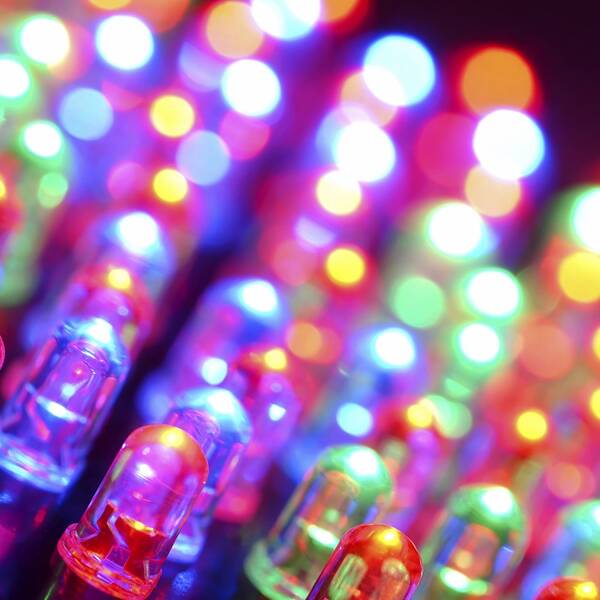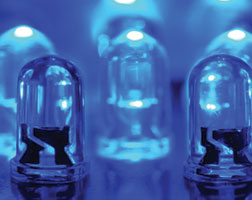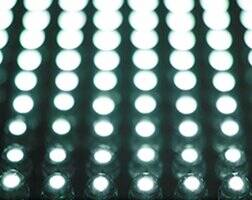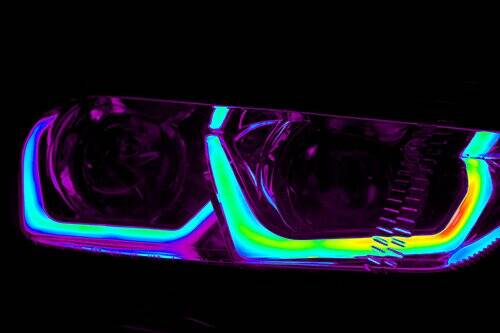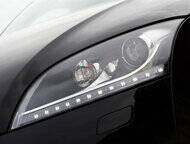Radiant develops integrated solutions for both R&D and production-line testing of intensity, illuminance, luminance, and chromaticity of various lighting sources. In R&D environments, compact goniometer systems combine imaging technology and application software to deliver fast, cost-effective, and comprehensive data, enabling lighting engineers to optimize their product designs and easily generate standard output files, including IES, EULUMDAT, or Radiant Source Model® (RSM) formats. On the production line, our imaging colorimeter and photometer solutions ensure product quality and consistency in real time, optimizing cost-efficiency and increasing yields.
LED Devices
LED Source Characterization
The physical structure of LEDs is more complex than most lamp sources. Accurate source models produced during the design of an LED-based system enable lighting engineers to achieve the desired performance of their design and verify correct assembly in production.
Radiant’s integrated systems for small light source measurement are comprised of an imaging colorimeter and precision goniometer with dedicated software to capture complete and precise data to characterize light source output. This data can then be used for design evaluation and imported into any major optical design package, such as ASAP®, FRED®, LightTools®, LucidShape®, Photopia™, IES TM-25, Opticad®, OSLO®, SimuLux®, SPEOS®, TracePro®, and OpticStudio™ (ZEMAX), as well as general file formats like IES or EULUMDAT.
Luminous Intensity Distribution Measurement
The output of an LED as a function of angle is its luminous intensity distribution, a measurement with critical implications for the quality and usability of the LED. Luminous intensity distribution describes the directionality of the light output and the power of light in each direction from the LED.
A key step in the production of encapsulated LEDs or LED-based optical assemblies is the alignment of the optics to the LED die. Improper alignment will alter the output of the LED—the angle and intensity of light emitted from it—and will impact the overall performance of the system in which it is used. Our goniometric systems acquire complete luminous intensity data for all output angles from a source LED, enabling designers to define an objective standard for optimal system performance, and to ensure that standard is maintained in production.
Related Links:
LED Arrays and Light Strips
Direct Measurement of Color and Brightness
LED arrays are found in a wide range of lighting products, including indicator lights, signage, LED strips, and backlights. Our high-precision measurement systems help design engineers accurately characterize their product designs. They also test color and brightness for quality assurance in high-volume manufacturing operations.
The nearly-monochromatic (narrowband) output of most LEDs has historically made it difficult to acquire accurate color and luminance measurement using systems based on color filters. Radiant's systems combine highly-accurate filters with our patented ProMetric® Imaging Colorimeter calibration technology to yield accurate chromaticity measurements while delivering the benefits of an image-based system. Our imaging colorimeters can also measure hundreds or even thousands of LEDs simultaneously.
Measurement image of an LED light strip captured by a ProMetric® I Imaging Colorimeter and shown in TrueTest™ Automated Visual Inspection Software. This image can be anlayzed to evaluate brightness, color, and uniformity along the light strip.
Headlamps and Large Light Sources
Illuminance Distribution Evaluation
Headlight evaluation standards require that a headlamp emit light in specific ways to produce acceptable beam patterns. This evaluation is used both to ensure the effectiveness of the lamp for illuminating the roadway within nationally regulated tolerances, and the quality of the light produced according to internal standards. When the headlamp beam is projected from a known distance onto a flat surface (Lambertian wall or screen), illuminance measurements are taken at physical locations along the plane of the wall to ensure the beam pattern is projected according to standard specifications.
Radiant cameras capture both illuminance and luminous intensity measurements of light sources cast on a Lambertian wall or screen using imaging colorimeters and photometers for comprehensive, efficient measurement of all data points in a single image. Headlamp evaluation presets (US and ECE test points) and other capabilities are available in Radiant PM-HL™ Headlamp Evaluation Software.


